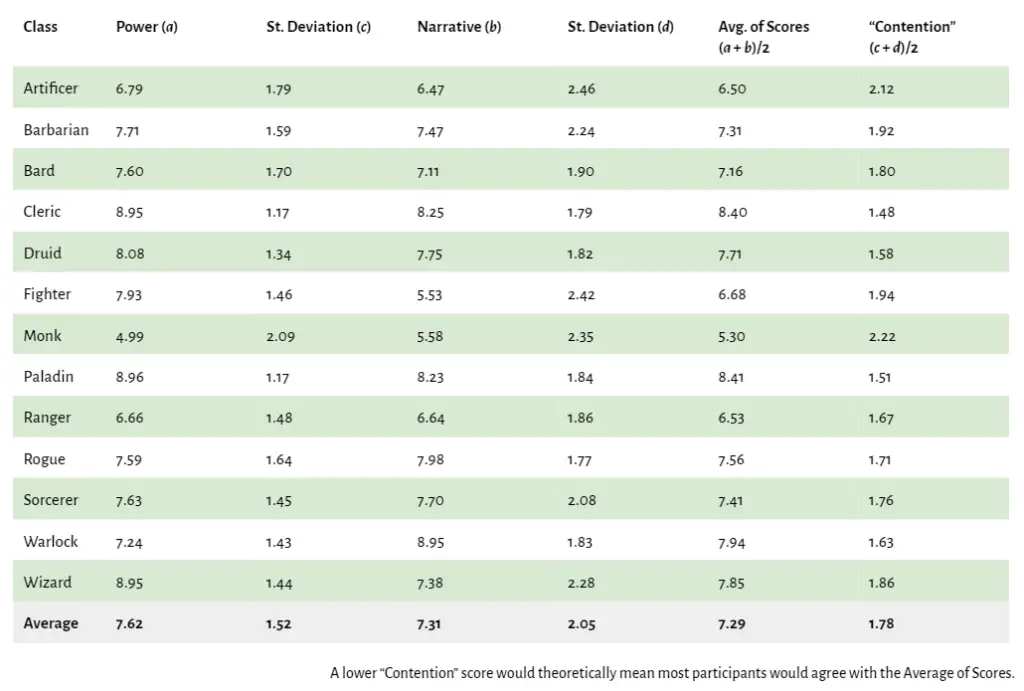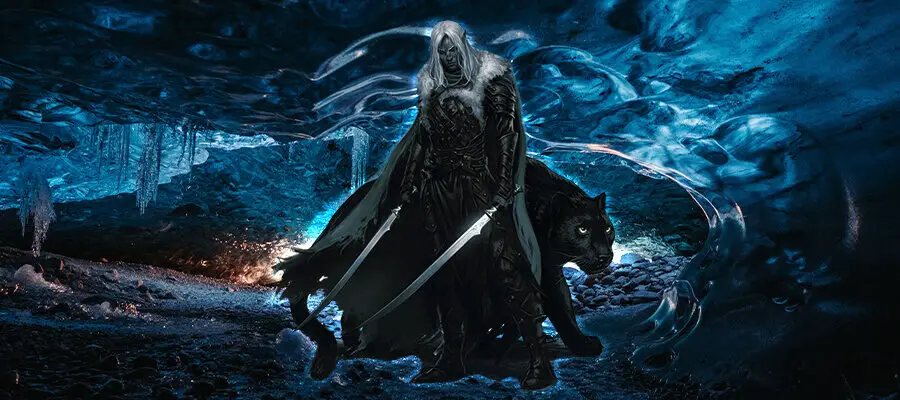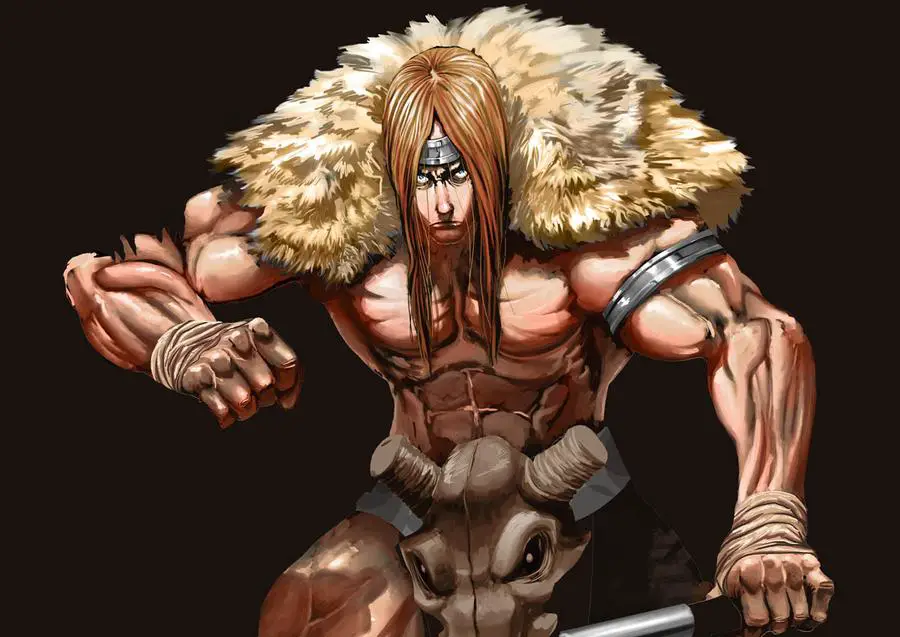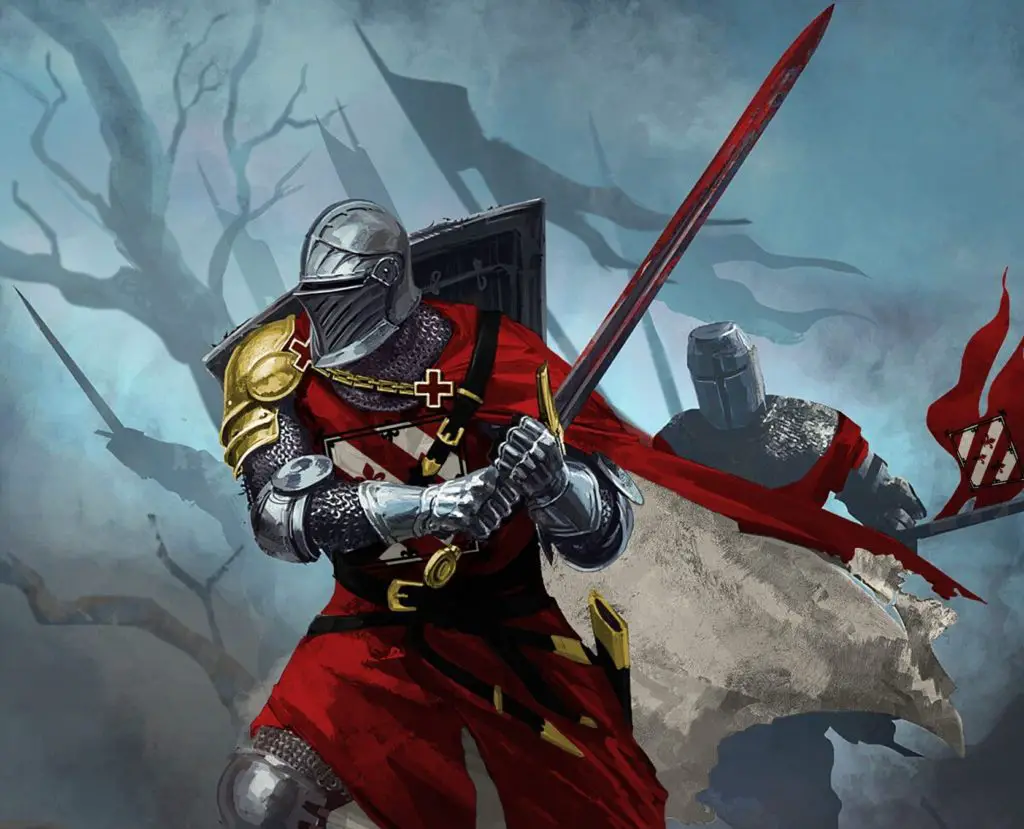D&D 5e revised Ranger article featured image is a combination of images from the Sword Coast Adventurer’s Guide and a photo by Mark Olsen on Unsplash. This article contains affiliate links to put gold in our coffers.
In this article, I’ve been asked to talk through my design process if I’m doing a revision or rework of a class. What better class to tackle the process with than the most over-reworked class of the edition, the Ranger?
Diagnosing the Ranger
There have been many… many takes on a variant 5e ranger class. Even Wizards of the Coast took their shot at a few over the years but never committed to a full class overhaul. You’d think surely over enough time, there’d at least be some kind of consensus on a “definitive” ranger… right?
…right?
As it turns out, “definitive” is a bit of a moving target. “Ranger” means different things to different people, but if D&D’s ranger isn’t fully meeting the power fantasy the majority of people have of the class, there’s probably an issue. If you ask someone who has been playing D&D for decades, they’ll tell you ranger’s design adheres to its traditional TTRPG roots as a primal half-caster. If you ask a fan of fantasy fiction, they’d likely point to Aragorn or Drizzt, and you’d have a purely martial survivalist. When you asked a World of Warcraft player, they’d assume you meant Hunter. If you asked a MOBA player, they’d assume you meant ADC or Marksman. So, who’s right here?
The Origin of Rangers
Rangers conceptually evolved around the 11th century in England. During this time, the aristocracy designated areas as protected “royal forests” where the wild animals within were protected from being hunted by anyone other than those permitted by royalty. These wildlife preserves had their own systems of law, and the officers that upheld the law were known as the Verderers. Chief of all the Verderers was the Warden (keep that name in mind), and the Warden’s subordinate officers were called Rangers.
The Advanced Dungeons & Dragons 2nd Edition Player’s Handbook lists Robin Hood, Orion, Jack the giant killer, and the huntresses of Diana as inspirations for the Ranger class, but the name itself wasn’t adopted for the archetype until the birth of Aragorn. Heroes of fantasy before Tolkien were modeled after the questing knights of Arthur and the epic tales of Odysseus. Tolkien transformed the wandering knight-errant from Medieval romance into the roaming survivalist warrior. The ranger hunts down its enemies like a ferocious predator rather than rely on the military training of knights.
D&D-inspired video games adapted the class, and its roots in hunting caused the term “ranger” to become synonymous with “hunter.” Over time, video games developed the archetype even further away from the ranger of D&D. Now, with the popularity of 5e, we’re seeing a dissonance as new D&D players are coming to the game with presuppositions from video games and media that had 30-40 years to develop the archetype in their own unique ways.
It turns out everyone’s technically right here, but there’s a dissonance happening that I can’t get past. Even the early edition of the ranger wasn’t getting its spells as a core class feature. They were granted at 8th level and were seen as pretty major powers for the ranger. It was also a d8 Hit Die class instead of a d10! There was a totally different playstyle evoked from it if we were doing a 5e port of that ranger.
Combat Identity
It isn’t just a narrative problem, though. The ranger’s combat identity likewise has significant issues. Notice how I said “combat identity” there and not “damage per round?” I personally don’t really care about an option dealing optimal damage to be appealing; I just want it to be interesting and viable in play.
Is ranger viable in play? Sure, but what are its class features telling us it does? If I can’t figure out what a class’s core gameplay loop and role are within 2 levels, there’s a problem. If you compare the first two levels of ranger and paladin, you’d wonder how these classes were published for the same game. While other classes are getting interesting features that define their turns in combat, the ranger is getting two super niche survival features, a restricted-option Fighting Style feature, and the most restrictive form of spellcasting in the game. Meanwhile, Paladin got Divine Smite, Barbarian got Rage, Rogue got Sneak Attack, Monk got Ki, Fighter got Action Surge, and Ranger… knows exactly how many opossums just walked through the area as long as they picked the right terrain?
See, I listed one feature for each of those classes, which communicated so much about what they do in a fight. Ranger gets bonuses to Exploration, but they cause dungeon masters to hand waive those aspects of the game because they trivialize it in an unhealthy way. By 2nd level, you’re just objectively overshadowed in combat by your other party members if you aren’t taking the optional features in Tasha’s Cauldron of Everything. Ranger just doesn’t truly come online until 3rd level, and by that time it’s relying on a decent subclass selection to carry a starving class. Ranger plays catch-up all the way to 3rd level, then doesn’t ever accelerate.
Solving for Fun
In April of this year, I conducted a survey on D&D 5e class fantasy fulfillment and overall strength. Participants were asked to rate each class’s narrative and power on a scale of 1 to 10. There were over 200 participants in the survey, and the results were definitely interesting.
Ranger wasn’t the lowest on either metric, but it did definitely fall below the average score on both. The only other classes to do so were Monk and–surprisingly–Bard and Artificer. If you’re wondering why Bard’s on here, I’m notoriously outspoken about my distaste for 5e’s bard. I think my criticisms influenced my audiences’ ratings quite a bit (at least that’s the story I believe the standard deviation is telling). In truth, Bard’s one of the game’s strongest spellcasters, but the narrative is admittedly weak. There were also several videos published around this time that painted Artificer in a pretty harsh light, so that also could have been a factor. I was seeing some pretty significant outliers in the data, and quite a few “all 1” or “all 10” surveys, so I implemented a system to ignore responses that deviated dramatically from the average response.
We figured out the Standard Deviation for the submitted results, and the number we got here could be thought of as a sort of measure of “controversy” or “contention” since it seems to quantify disagreement. Of the four lowest-scoring classes, Ranger was the only one whose “contention” rating was below average. Now sure, this isn’t some absolutely conclusive measure of the class. However, participants being uniquely aligned in Ranger’s low score tells me there’s at least some non-subjective truth to ranger failing in its design.

Redesigning
When I start on any design, I consider “What is the core fantasy?” This is where I think back to the narrative I mentioned earlier. If I’m looking at the archetypal rangers, I’m picturing the skulking duelist, the archer survivalist, and the primal beast master.
Before we go much further, I don’t like designing from a standpoint of taking things away. I think the best way to make a compelling, interesting new ranger while still pleasing traditional ranger fans is to bring back a half-caster class that existed back in 4e; the Warden (remember from earlier?). We won’t get into that here, but just keep in mind that I’m not suggesting throwing out the mechanics of 5e’s ranger while I’m proposing these changes.
Zone
Current Ranger: Flexible
Revised Ranger: Flexible Mid-to-Backline
I’ve previously talked about the zones of combat on my channel, but I’ll give a brief here. Your character will spend the majority of their time in combat in one of three zones:
Frontline: The area within melee reach of any enemy.
Midline: The area out of melee reach of any enemy, but within their speed.
Backline: The area outside of an enemy’s speed.
A few things inform you of your character’s zone in combat: your Hit Die size and Armor Proficiencies.
- Characters with a d10 or d12 Hit Die with an AC of 16 or higher are Frontliners.
- Characters with a d8 or d10 Hit Die with an AC of 15 or lower are Midliners.
- Characters with a d6 Hit Die are Backliners.
My first thought is that Ranger’s Hit Die should be brought down to a d8. This might sound like a nerf, but we’re going to give Ranger some new toys to compensate. A class gets a d10 Hit Die if it’s meant to stay in the frontline throughout combat rather than pop in and out. I don’t believe the archetypal ranger we’re aiming for has ever been known to tank. Plus, this was what Rangers originally got in earlier editions, so… old-school traditionalists should be on board, right?
I also think about the class’s armor proficiencies when I’m thinking about its zone. Ranger getting light and medium armor with shields is huge for a flexible mid-liner. I’m fine with keeping it at the moment, but if in playtest this new ranger is just way too safe with a disengagement tool, then this is what’s getting trimmed.
Disengagement Tool. Any character option that tries to reinforce the harasser playstyle where you pop in and out of melee is going to grant you a way to also Disengage on the turn you attack.
Role
Current Ranger: Striker/Support
Revised Ranger: Harasser
When I was working on the redesign, I pictured a “druid-y rogue” rather than the “druid-y paladin” the current 5e ranger gives off. More feral stalker than wilderness defender. I’d like the theoretical Warden class I talked about earlier to occupy that latter space. I’m already feeling intrigued by the idea of ranger as a flexible midline harasser striker with a roleplay dynamic as a navigator, scout, and sneak.
Part of this “core fantasy” is thinking about not just literary inspirations, but also what video games inspired the fiction. Consistently we see ranger and hunter characters specializing in Critical Hit chance (ex: Artemis in Hades, Critical Strikes for Hunters from World of Warcraft). There’s also the consistent theme of a Mark, a-la the hunter’s mark spell. If we’re going to scrap spellcasting, we’ve got to give this class something worth that trade. While hunter’s mark seems to just be a core part of most Ranger kits, it is a spell, and I’d like to keep it off this ranger if possible because…
Spell-Less Ranger. Possibly inspired by the line from Fellowship of the Ring that rangers were “… believed to have strange powers of sight and hearing, and to understand the languages of beasts and birds…”, rangers appeared in Dungeons & Dragons with late-level spellcasting potential. Sure, you can reflavor spellcasting to be “quick settings of natural traps” or “tapping into a supernatural reserve of stamina,” but there’s still in-game restrictions built into these things being magical.
I know this is anecdotal, but stick with me. I’ve DMed for several rangers in the past 6 years. On two separate occasions, I had ranger players that–of their own volition–intentionally chose to ignore ranger’s spellcasting because the fantasy of “ranger” to them was not a magic user. After discussing this with my community, I found out this wasn’t some unique phenomenon. It wasn’t just that players have been taking fighter or rogue levels and calling themselves a “ranger.” These are players full-leveling ranger for the flavor and intentionally choosing not to put spellcasting on their character sheet. They played a mechanically less-viable version of their character to achieve the fantasy they had envisioned.
Because it’s pretty clear the traditional fantasy informs a martial survivalist, I opted to make my revised ranger a pure martialist and intend to move the ranger spellcasting over to a future Warden class.
Now, there was an optional feature they granted Ranger in Tasha’s Cauldron of Everything that I think I’m going to take a note from. Favored Foe is going to serve as my “nonmagical mark” feature, but with a twist inspired by Hunter archetypes from video games. This one is going to affect our critical hit chance. I also want to kill the concentration requirement. This seemed to have terrible play-feel, but it was required to keep it in check with hunter’s mark on a spellcaster ranger.
| Favored Foe 1st-level ranger feature When you hit a creature with an attack roll, you can call on your mystical bond with nature to mark the target as your favored enemy for 24 hours or until you use this feature again. While a target is marked, your weapon attacks score a critical hit on a roll of 19 or 20 against it, and you have advantage on ability checks made to track it. The attack roll required for you to score a critical hit is reduced when you reach certain levels, starting with 18-20 at 9th level, and 17-20 at 17th level. |
With this version, the “until you use this feature again.” clause prevents it from stacking, but we’re not really worried about this piling onto itself. Now, it’s more about the narrative of focus on the mark rather than a balance check. This also helps to reinforce the Ranger’s role; single target damage-per-round.
Now, this ranger still needs its Disengagement tool I mentioned earlier. For that, I really love Rogue’s Cunning Action, but I felt like we could do something REALLY evocative for Ranger here.
| Survival Instinct 2nd-level ranger feature You can take a bonus action on each of your turns in combat. This action can be used only to take the Disengage, Hide, or Search action. |
So we have a gameplay loop now in combat!
Action: Attack
Bonus Action: Attack (Two-Weapon), Disengage, Hide, or Search
Dynamic
Current Ranger: Navigator/Scout/Sneak
Revised Ranger: Same
I barely want to touch ranger’s Dynamic here. I just want to see what I can work out of some new 1st and 2nd-level features. Natural Explorer needed a real rework, despite me liking quite a lot of what it wants to do.
| Natural Explorer 1st-level ranger feature You are a master of navigating the natural world and are adept at surviving in such regions. You can add your Wisdom modifier to any ability check or saving throw you make against natural environmental effects, such as to determine the weather or to survive in extreme cold. Additionally, when you travel outdoors for an hour or longer, you gain the following benefits until you go indoors for an hour or longer: Your group can’t become lost except by magical means and you gain a +5 bonus to your Passive Perception. You learn the exact number and sizes of creatures you track, as well as how long ago they passed through the area. |
Rather than cause this feature to hand waive survival exploration, I’ve focused on giving meaningful benefits towards environmental dangers. You don’t need to pick a terrain, this is just on for you when you travel. I’m also reworking a 2nd and 3rd-level feature here. I loved the flavor evoked by the optional Roving feature from Tasha’s Cauldron of Everything, and felt it was always deserving of 2nd-level inclusion.
| Roving 2nd-level ranger feature Your walking speed increases by 5 feet, and you gain a climbing and swimming speed equal to your walking speed. Further, nonmagical difficult terrain doesn’t slow your group’s travel while you guide them and moving through it costs you no extra movement. If you are traveling alone, you can move stealthily at a normal pace. |
Additionally, there’s a scene from Lord of the Rings I’ll always remember when I think “Ranger.” During The Two Towers, Aragorn, Legolas, and Gimli are in pursuit of the orcs that capture Merry and Pippin. When they lose the trail, Aragorn stops, lays down, and listens to the earth to hear their pace quickened. This is such an iconic ranger scene, and I’ll never forgive Wizards of the Coast for ignoring it completely. The reason I know they ignored it completely is because the answer to this was right in front of them.
| Primeval Awareness 3rd-level ranger feature Your awareness is enhanced through your interconnection with nature, giving you tremorsense with a range of 10 feet. You can use your bonus action to focus on this sense, which increases its range to 60 feet until you move. You can use this bonus action only if you haven’t moved this turn, and after you use the bonus action, your speed is 0 until the end of the current turn. |
Beyond 3rd Level
We still have its subclass at 3rd, I won’t be messing with that. Ability Score Improvement at 4th and of course we want Extra Attack at 5th level. From there, I’ll let you all dig into the PDF I’m providing Flutes Loot so you all can see my thoughts. This article was really over my “jumping off point” when I sit down to do a rework, and the definition of a unique core and gameplay loop are more important than anything else you can build for a class.
Hopefully you all can see my thought process going from feeling like something’s off to externalizing and addressing it. Feel free to come by a design livestream and check out the resources on my YouTube channel, my Patreon, or in my Design-o-Sphere Discord!
You can also explore more revisions and homebrew ideas and Ranger concepts here on Flutes Loot.





Greetings! In the conclusion of this article about the magic-less ranger revision, a beyond 3rd level .pdf is mentioned.
I would *love* to see the additional class abilities beyond 3rd level.
Any information would be much appreciated!
Thanks for saying so! To my knowledge, Taron only redesigned the core Ranger to illustrate best practices for revising classes from a designer’s perspective. Feel free to join his Discord which is linked in his YouTube channel and encourage him to share more about how he might revise the Ranger 🙂 https://www.youtube.com/@Indestructoboy